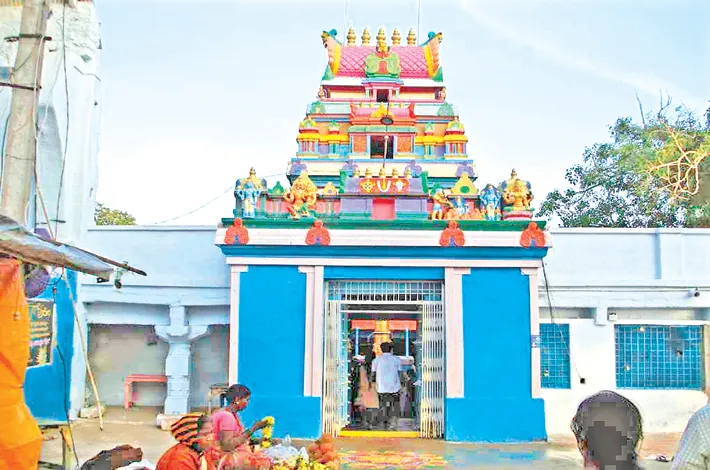Article 26: Pious purpose and the exponential rise of Bharat
10-11-2025 12:00:00 AM

The Temple Entry Proclamation of 1936, issued under divine inspiration, became a landmark in social reform, opening temples to the Tiruppan Alwar (SC/ST) community
The spiritual foundation of Bharat’s Constitution shines most clearly in Article 26, which safeguards the right of every religious denomination to manage its own affairs in matters of religion. Yet, when viewed through the lens of Bharat’s civilizational consciousness, this provision does more than secure freedom of worship—it reaffirms the ancient principle that the Sovereignty of Dharma governs all substantial Deity interests in this sacred land.
This eternal truth, revealed anew through the constitutional discourse surrounding the Shri Chilkur Balaji Deity, traces its lineage to the sacred Vilasa inscription written after the fall of the Kakatiya kingdom. That inscription guided the founding of the Vijayanagara Empire, whose mission was the establishment of a thousand years of Dharma Rajya—a just and righteous order. The rebirth of Bharat as a Republic on 26 January 1950, therefore, represents not merely a political event but the fulfilment of that divine assurance—the continuation of Dharma through modern constitutional form.
A luminous example of Deity-led governance emerged in Travancore, where King Marthanda Varma, in 1750, dedicated his kingdom to Sree Padmanabha Swamy and ruled as Padmanabha Dasa. This unique polity demonstrated that Deity sovereignty and religious harmony could coexist: the Missionary Gazetteer of 1828 noted that Travancore permitted Hindus, Muslims, Christians, and Jews to worship freely. When external forces later attempted to undermine temple sovereignty, Travancore’s rulers upheld the Deity’s authority in matters of faith.
The Temple Entry Proclamation of 1936, issued under divine inspiration, became a landmark in Dharma-guided social reform, opening temples to the Tiruppan Alwar (SC/ST) community. This act inspired Mahatma Gandhi and Rajaji, shaping the ideals later enshrined in Articles 25 and 26—freedom of religion and equality of access to religious institutions.
Upon signing the Instrument of Accession (1949), the Travancore Maharaja retained the Deity’s constitutional right to uphold Dharma, even as legislative powers passed to the Union. The same spirit resonates in the Objectives Resolution (1947)—“Dharma, righteousness, is king of kings”—and the Government Assurance of 22 July 1947, which guaranteed the right to worship and protect cultural heritage. Together, these reflect the unbroken spiritual sovereignty of Bharat, recognized by law under the Indian Independence Act.
In present times, Shri Chilkur Balaji Deity, through the Rama Rajya dispute under Article 363, has reaffirmed this eternal limit—the duty to protect Deity interests as a mother protects her child, known as the Tiruppan Alwar Ammal Doctrine of Dharma. The divine convergence of 22 January 2024, the day of Shri Ram Lalla’s Pranaprathishta at Ayodhya, symbolized the integration of the Deity’s legal personality with the constitutional sovereignty of Dharma.
Thus, Article 26 stands not merely as a guarantee of denominational rights but as a constitutional recognition of Dharma itself—the living force that protects all faiths, including those of foreign origin. Every individual who takes the Constitutional Oath in the name of God (Article 60) does so with divine consent, pledging fidelity to the Dharma that sustains the Republic.
When this sacred understanding of Article 26 is realized—honoring the contribution of the Tiruppan Alwar Ammal community and acknowledging the divine continuity from Vijayanagara to Ayodhya—Bharat will truly ascend toward her promised destiny: a thousand-year stable Dharma Rajya, the exponential rise of a civilization guided by righteousness.








